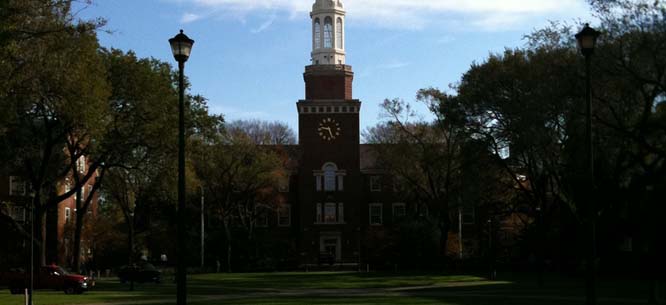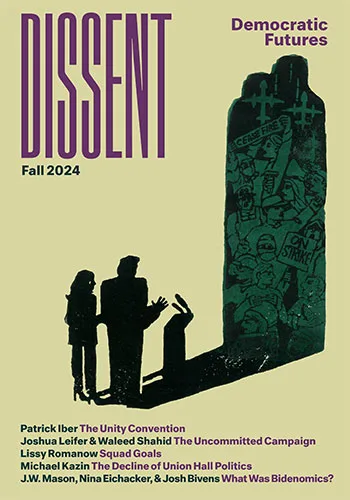CUNY’s Pathways Initiative and the Future of Higher Education Reform
CUNY’s Pathways Initiative and the Future of Higher Education Reform

What began as a fight between English faculty and the administration at a small urban community college is quickly becoming the front line in a national struggle over the future of higher education. As of this writing, two of the largest faculty organizations in the country, the Modern Language Association and the American Association of University Professors, have taken strong public stands against the City University of New York’s controversial Pathways to Degree Completion initiative, which supporters claim will streamline transfers between branches of the university system and increase graduation rates. These denouncements follow the creation of a national petition against Pathways and a spirited and growing campaign by the Professional Staff Congress, CUNY’s faculty union, to resist the proposed changes.
At its annual convention this January the MLA Delegate Assembly voted almost unanimously in favor of a resolution criticizing Pathways. The resolution, which will soon be voted on by the entire membership, urged support for CUNY faculty who are resisting the initiative and criticized administrators for violating standards of faculty governance and curricular control. The AAUP president, Rudy Fichtenbaum, also issued a strong statement in support of CUNY faculty, calling this “a watershed moment for higher education,” and urging all AAUP members to sign the national petition demanding a moratorium on the implementation of the plan. The AAUP has been actively investigating the situation at CUNY almost since the program’s inception and has been in contact with the university chancellery and board of trustees several times to express concern over the negative effects of Pathways on student learning and faculty governance.
Why are organizations like the MLA and the AAUP so outraged over an initiative whose supporters claim is intended to make transfer within CUNY easier for community college students? The answer is simple: CUNY’s Pathways initiative is about a lot more than CUNY. Indeed, Pathways and degree completion initiatives like it have become the vanguard of higher education reform, and similar initiatives are underway or have already been passed at some of the nation’s largest public university systems, including the University of California, Florida State University, and the University of Wisconsin.
Driven by the ideology of such philanthropically funded national education reform organizations as the Bill and Melinda Gates Foundation and the Lumina Foundation, Pathways is yet another veiled attempt to impose economic and intellectual austerity upon one of the most ethnically diverse university systems in the country. In an effort to make CUNY more efficient (that is, graduate more students for the same number of dollars), Pathways would undermine the traditional liberal undergraduate curriculum—where students are expected to study and master the basics of a vast array of different subjects—and replace it with a stripped down “common core” that simplifies graduation and transfer at the expense of rigor and academic standards. By fetishizing graduation rates and the idea of quick and seamless transfer from community to senior colleges, Pathways discourages intellectual exploration, eliminates laboratory requirements for many science courses, and guts contact time for composition and foreign language courses. Because of this, Pathways would diminish the reputation and value of a CUNY degree and would make transferring credits between CUNY and other university systems much more difficult and complicated—a fact that undermines the very premise of the plan.
The problem with Pathways, then, is not necessarily its stated goals, but its narrow focus and its ham-fisted implementation. Most faculty members, if asked, would agree that they want more of their students to graduate and that they would like them to be able to transfer more easily from one institution to another (without needing to repeat courses they have already taken and done well in). But many faculty, and an increasing number of students, don’t want such priorities to be met at the expense of science and foreign language labs, time spent in class, contact with professors, and manageable class sizes and faculty course loads. Furthermore, many faculty members are outraged by the fact that the most basic curricular decisions are now being taken out of their hands and placed in the hands of administrators.
Such an aggressively unilateral administrative approach to curricular reform follows the overall game plan for private reform of public higher education: consolidate more decision making and policy power among a few ideologically pure administrators and legislators, who can then implement unpopular but supposedly necessary changes to their state universities. This is straight out of the Lumina Foundation’s strategic playbook, which emphasizes the need for top-down legislative solutions to the supposed problems of higher education. (The Gates and Lumina foundations have both had an enormous impact on Obama’s education policy, and some of the most powerful administrators in public higher education, including UC President Mark Yudof, are Lumina board members.)
Such an aggressively unilateral administrative approach to curricular reform follows the overall game plan for private reform of public higher education: consolidate more decision making and policy power among a few ideologically pure administrators and legislators, who can then implement unpopular but supposedly necessary changes to their state universities.
Just as the Lumina Foundation and its many imitators and allies have successfully influenced higher education policy by using their money to gain leverage, collaborate with government, and manipulate public sentiment, CUNY’s Pathways initiative would impose an entirely new system upon the faculty and students at CUNY. And while the CUNY administration would argue that it has only the students best interests in mind, the real goal is control: control of curriculum, control of standards, control of departments, and control of faculty—all of which university administrators see as necessary to control costs. Rather than creating more opportunities for learning and providing more contact time with instructors, CUNY administrators have embraced the mantra that more college graduates, regardless of how they are created, and regardless of what happens to public education, is a public good.
The Lumina Foundation, which was founded by former Sallie Mae chairman Ed McCabe and created with the sale of a billion dollars in student loan debt, has come under increasing scrutiny for its ambitious and highly improbable—they like to describe it as “audacious”—call for a national college completion rate of 60 percent by 2025. (Currently only 39 percent of the U.S. population has an associate degree and only 30 percent have completed a bachelor’s.) As others have noted, this figure would be wildly unattainable without either a massive influx of federal and state dollars—a highly unlikely scenario—a massive increase in student loan debt—already underway—and/or a radical reduction in the overall quality and scope of higher education. To achieve such numbers colleges would not only have to recruit and provide services to millions of new students, but would have to drastically reduce the number of students who fail or drop out for reasons that frequently have nothing to do with core curricula or problems transferring credits from one institution to another. Indeed, as many studies have shown, college completion has a lot more to do with economics than with what’s being taught.
By limiting intellectual exploration and imposing what critics have rightly claimed is a kind of “soft bigotry of lowered expectations,” initiatives such as Pathways are essentially turning public institutions like CUNY into education ghettos and transforming public higher education, for all but the nation’s privileged few, into professional training for the “knowledge economy.” Even this diminished dream is fleeting: despite the most recent economic collapse and the growing student loan debt bubble, the Lumina Foundation and CUNY continue to act as if a college degree somehow magically confers prosperity upon its owners and those around them. Meanwhile, elite private universities and small liberal arts colleges continue to invest in a greater variety of course offerings, more individualized attention from faculty members, smaller classes, and more electives precisely because they know that is the best way to ensure real learning.
Pathways and other programs like it are anathema to everything that CUNY stands for and will only further the already deep disparities between public and private universities and colleges. CUNY was founded with the goal of providing free, quality education to the poor and working-class children of New York City. If it is to continue to succeed as an institution worth fighting for, it would do well to jettison its narrow focus on graduation rates and return to that original mission.
James Dennis is an instructor of English and journalism at CUNY.





